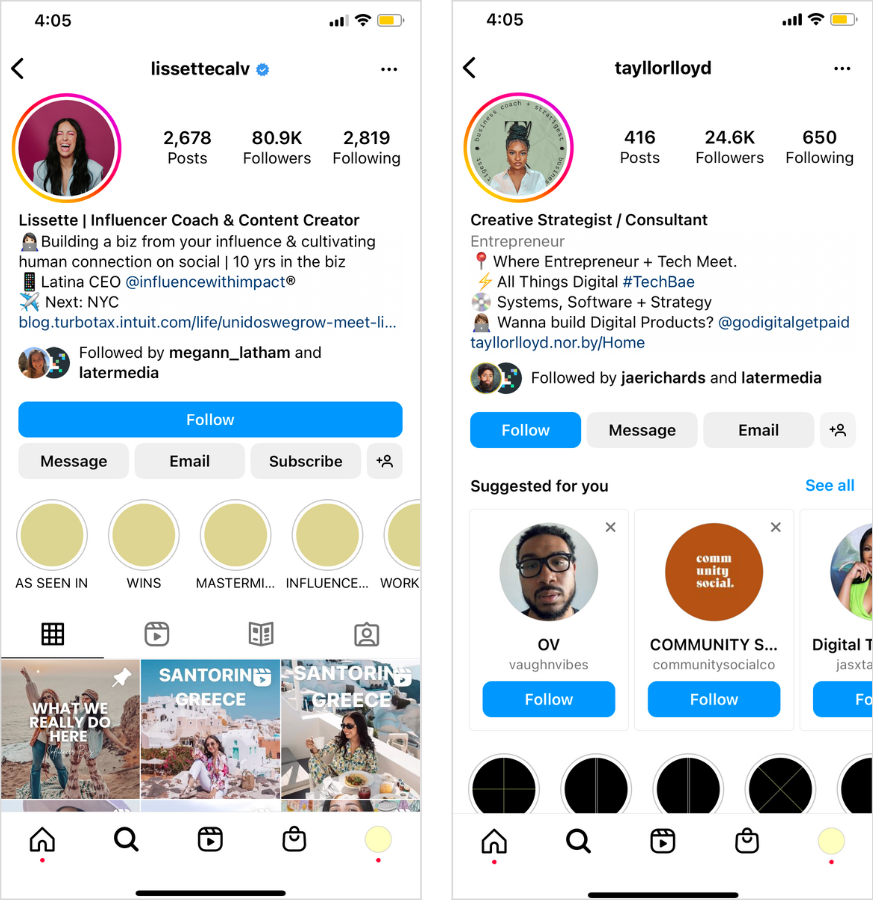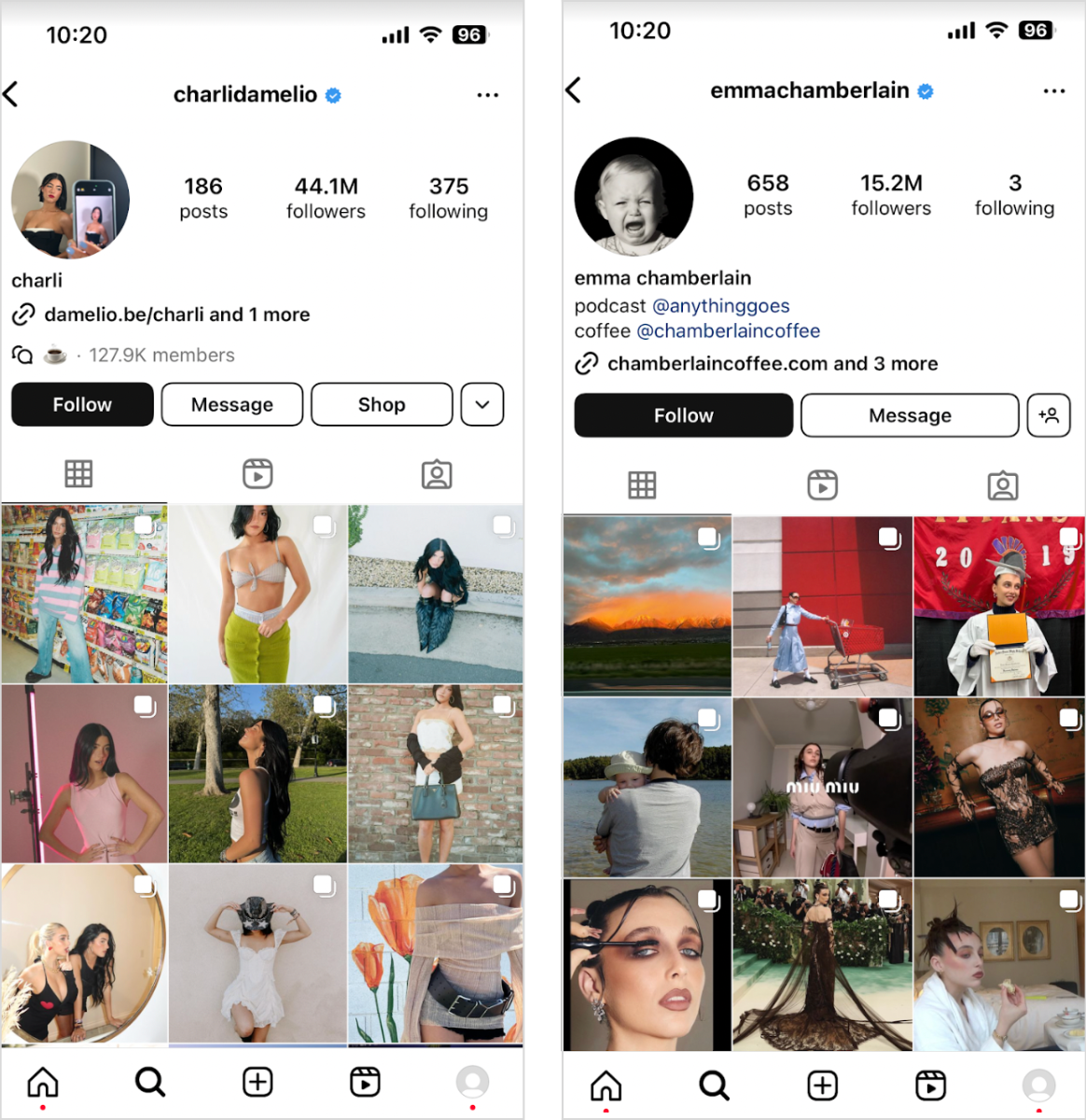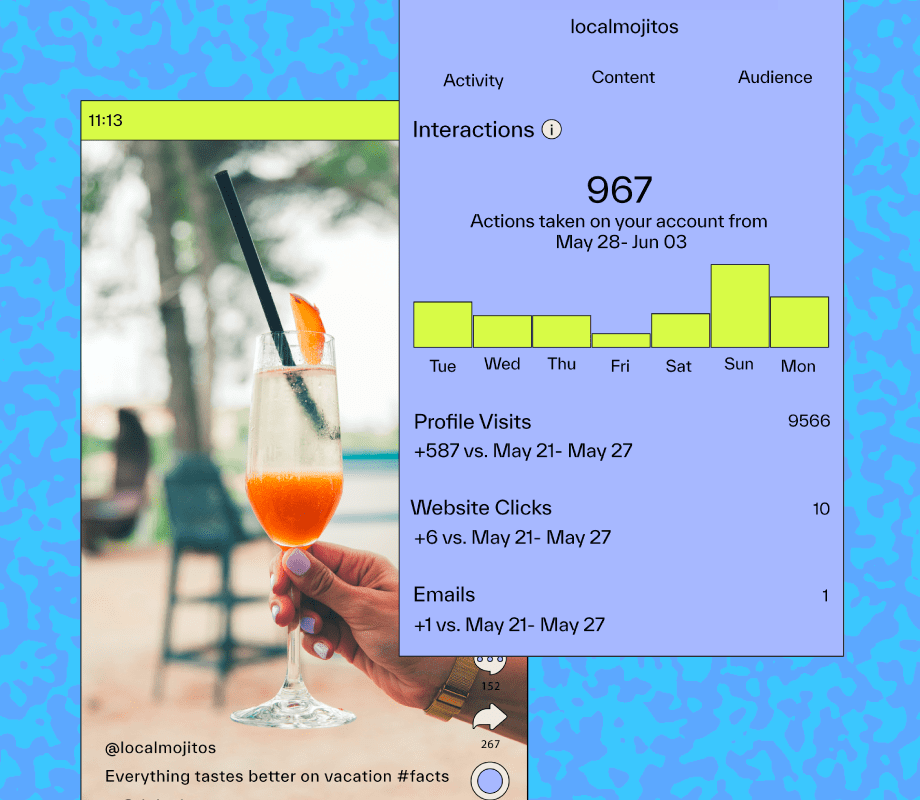Did you know that influencer marketing is a multi-billion dollar industry — and the global influencer marketing spend is projected to reach $32 billion in 2025?
Plus, 69.7% of marketers in companies with over 100 employees expect to use influencer marketing as part of their overall marketing mix.
And for good reason! Over 80% of consumers are open to influencers impacting their purchasing decisions.
This is all exciting news — but how can you use these influencer marketing statistics to drive your social strategy?
Read on for 14 actionable influencer marketing stats to help you get ahead and grow your business in 2025.
Table of Contents
Join over 1 million marketers to get social news, trends, and tips right to your inbox!
Email AddressCreator Economy Statistics
The creator economy — the system or market that supports and rewards people who create original, creative content online — is booming.
Here are the top Creator Economy stats you need to know.
1. Cost per Activation (CPA) Is Down 19.2% on Average
The cost per activation, AKA the cost of launching an influencer campaign, is down 19.2% across Instagram (Feed, Stories, and Reels), TikTok, and Facebook.
However, CPA is up on Pinterest.
Why this matters: A lower CPA means you can do more with the same influencer marketing budget — either by posting more on less expensive platforms or activating more influencers per campaign.
Source: Later’s Influencer Marketing Benchmarks Report
2. TikTok Has the Highest Average CPA for Smaller Accounts; Instagram Posts Have the Lowest CPA
Working with nano influencers and micro influencers? Instagram posts might be your most cost-effective option.

Instagram posts from smaller influencers have a CPA of $176.50, while TikToks have an average CPA of $1,161.
Why this matters: Make the most of your marketing budget. If you can access the same audience on a less expensive platform, the ROI of your influencer marketing campaigns could shoot up.
Source: Later’s Influencer Marketing Benchmarks Report
3. Instagram Reels and Stories Have the Highest CPA for Mid and Macro Influencers
Mid influencers and macro influencers have an average CPA of over $10K for Instagram Stories and over $7K for Instagram Reels.
But don’t write off Reels & Stories just yet. These posts from creators with larger followings increase brand awareness and engagement, building your brand.
Why this matters: Consider your campaign goals and budget while building your influencer marketing strategy.
Source: Later’s Influencer Marketing Benchmarks Report
Later’s Influencer Marketing Benchmarks Report is the ultimate roadmap to see how your results stack up and if your goals are achievable.
Discover industry trends and how you compare to your competition — download now.
Influencer Marketing Growth Statistics
The influencer marketing industry is growing and the way that businesses work with creators is shifting — here’s what you need to know:
4. B2B Brands Are Working With Influencers
Influencer marketing isn’t just for B2C brands anymore; 60% of B2B brands are adding influencer marketing to their mix in 2024.
However, 26% of these brands are doing something unique – they’re taking advice from influencers and bringing them on board as advisors.
Why this matters: Influencer marketing is valuable for your brand, no matter what industry you work in. Make it work by learning from those with experience – creators themselves.
Source: Marketing Charts
5. Small Audiences = Bigger Returns
According to Hubspot, 47% of marketers had success working with micro influencers in 2023.
Brands saw the advantages of working with smaller creators with more engaged followings.
Why this matters: Micro influencers can connect to your target audience and create stronger relationships with your brands than macro influencers.
This can also mean more cost-effective uses of influencer marketing budgets.
Source: Hubspot
6. Influencer Marketing Budgets Are Growing
In 2024, 48% of marketers are increasing their influencer marketing budgets, while 23% are maintaining the same budget from 2023.
Why this matters: You can assume that nearly half of your competitors are spending more on influencer marketing, with another quarter maintaining their spending.
TL;DR? Now is the time to invest in creators!
Source: InvespCRO
7. Brands Are Diversifying Their Influencer Mix
According to Statista, 62.4% of brands have worked with more than 10 influencers.
As the influencer space grows, so do your opportunities to work with more varied influencers and experiment with different platforms and campaigns.
Why this matters: Don’t be afraid to try working with different creators to build new relationships and connect with new audiences.
Source: Statista
Influencer & Creator Statistics
Who are creators and influencers and what does the creator economy mean to them?
8. Creators Are Posting More per Campaign
In 2024, creators post 16% more content per campaign compared to previous years.
More deliverables mean more opportunities for brands to make their mark – but more to organize, manage, and sign off on.
Why this matters: Make sure that you’re prepared to manage bigger, more robust influencer marketing campaigns. Using influencer management platforms like Later Influence makes it easy.
Source: Later’s Influencer Marketing Benchmarks Report
9. Instagram Influencers Are Becoming Successful at Younger Ages
Creators are skewing younger than ever before. 31% of Instagram Influencers are between the ages of 18 to 24.

Why this matters: Young people have grown up with social media and influencer marketing. Working with these creators allows you to learn from the experts – don’t let preconceived notions about age affect how you work with them.
Source: Statista
10. Content Creation Can Take a Toll on Mental Health
49% of social media influencers say that they’ve experienced burnout.
The WHO defines burnout as “chronic workplace stress that has not been successfully managed.”
Why this matters: Influencing and content creation is a job that comes with a unique set of pressures and stress. Kindness in collaborating with creators is essential.
Source: Later's Creator Mental Health Report
11. Influencers Compare Themselves to Other Creators
According to Later's Creator Mental Health Report, nearly 40% of influencers feel pressure to grow their following and compare themselves to other content creators.
Why this matters: If you’re working with multiple influencers on a campaign, foster a sense of collaboration instead of competition. This solidifies you as a great influencer partner, allowing you to build better partnerships that lead to better results.
Gen Z & Influencer Marketing Statistics
12. People Trust Influencers More Than They Trust Brands
Social proof is more important than ever. 69% of consumers trust influencers, friends, and family over information directly from brands.
Why this matters: Influencer marketing works. That’s it. That’s the insight.
Source: MarketingDive
13. Gen Z Trusts Creators More Than Their Peers
Gen Z wants to emulate influencers instead of those they know IRL.
45% of people surveyed want to wear brands they’ve seen on their favorite creators, while only 18% want to wear brands their friends wear.
Why this matters: If you’re marketing to Gen Z, creator trust is strong; it might be worth allocating more of your marketing budget to influencer marketing.
Source: The Drum
14. Social Media Sells
85% of Gen Z say that social media has impacted their decision to buy products, with most getting key information from Instagram and TikTok.
Why this matters: Social media is still relevant – your brand should have some visibility on Instagram and TikTok, especially if you’re targeting a younger audience.
Source: RetailDive
Influencer Marketing Statistics You Can Use
The true value of influencer marketing comes when brands and creators work strategically and collaboratively.
For brands, that means making data-informed decisions about which influencers to work with (and how to work with them).
For creators and influencers, it means understanding your unique voice and the brand’s goals and creating something amazing together.
If you’re looking to understand the world of influencer marketing better, learn more in Later’s influencer marketing benchmarks report.
And if you’re a brand or agency looking to up your influencer marketing game and collect your own benchmark statistics to grow from, book a demo of Later’s influencer marketing platform today!




